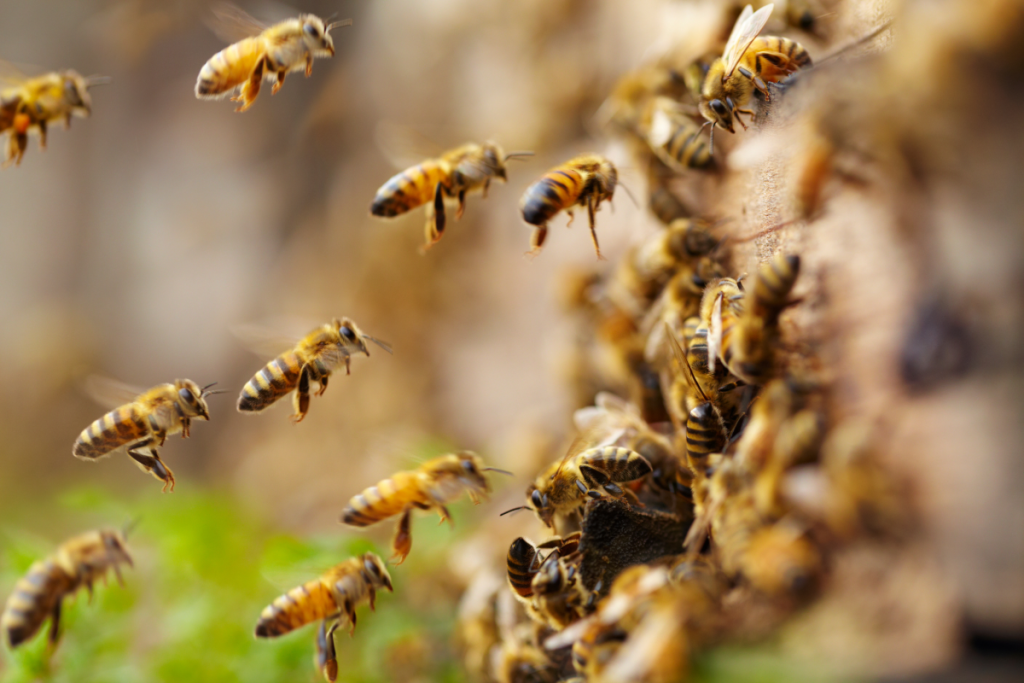IN THE GARDEN: November to do lists and traveling swarms

Vegetable Garden:
- Plant cool-season crops: broccoli, cauliflower, kale, spinach, carrots, and radishes.
- Harvest fall crops: tomatoes, peppers, cucumbers, squash, and okra.
- Remove spent plants to prevent disease and pests.
Flower Garden:
- Plant pansies, violas, and cyclamen for winter color.
- Divide and transplant perennials: daylilies, lantana, and zinnias.
- Deadhead flowers to encourage blooming.
Deadheading is a simple technique that encourages flowering plants to bloom more and grow vigorously. By removing spent flowers, you’re redirecting the plant’s energy from seed production to new growth. This triggers a hormonal response, boosting auxin production, which promotes healthy growth and branching.
Lawn Care:
- Fertilize lawns with a winterize fertilizer.
- Overseed bare spots or aerate lawns.
- Maintain mower height at 2.5-3 inches.
Tree and Shrub Care:
- Plant trees and shrubs during cooler weather.
- Prune deciduous trees and shrubs after leaf drop.
- Protect young trees from frost.
Soil and Compost:
- Mulch, mulch, and more mulch!!
- Add organic matter: compost, manure, or peat moss.
- Test soil pH and adjust as needed.
Pest and Disease Control:
- Monitor for aphids, whiteflies, and spider mites.
- Treat fungal diseases with fungicides.
Other Tasks:
- Clean and store gardening tools.
- Protect sensitive plants from frost.
- Plan for spring gardening.

Traveling Swarms
There was a loud constant buzzing noise coming from the kitchen. I (daughter) looked out to see a mass of bees. Traveling swarms of bees are a common occurrence in Central Texas, particularly during the spring and summer months, or fall months that feel like summer. This phenomenon occurs when a bee colony becomes overcrowded, prompting the queen bee to depart with a portion of the colony to establish a new hive. Swarms are an essential aspect of bee colony reproduction, and their presence indicates a healthy bee population.
Upon encountering a swarm, it’s crucial to exercise caution. A swarm typically appears as a large cluster of bees clinging to a surface, accompanied by a cloud of bees flying around them. Bees may also be crawling on nearby surfaces or the ground. While swarms can appear alarming, they tend to be non-aggressive unless provoked. Honeybees are the primary species to swarm in Texas, although carpenter bees and bumblebees may also form smaller aggregations.
To ensure safety and prevent potential issues, maintain a safe distance of at least 10-15 feet from the swarm. Avoid disturbing or touching the bees, as this can trigger defensive behavior. Swarms are typically temporary, relocating to their new destination within a few days. To discourage swarms from settling on your property, seal entry points, remove food sources, and keep trash cans securely sealed. By taking these precautions and coexisting with bees, we can promote the well-being of these vital pollinators.
Til next time.
Keep your souls and soles in your garden!
Remember the True Master Gardener: Jesus said, “I am the vine; my Father is the Gardener.” John 15:1 Have questions or comments? Contact Martelle at (512) 769-3179 or email luedeckephotography@gmail.com or Bill at email bill@texasland.net.


